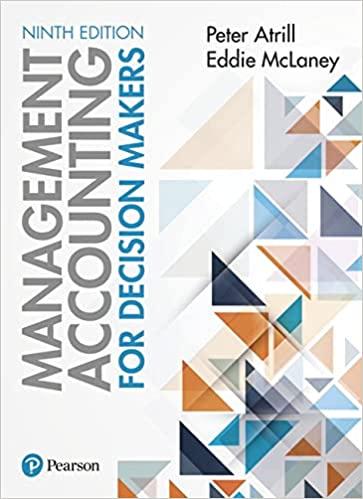Question
15. Maren received 12 NQOs (each option gives her the right to purchase 7 shares of stock for $10 per share) at the time she
15.Maren received 12 NQOs (each option gives her the right to purchase 7 shares of stock for $10 per share) at the time she started working when the stock price was $8 per share. When the share price was $20 per share, she exercised all of her options. Eighteen months later she sold all of the shares for $23 per share. How much gain will Maren recognize on the sale of the shares and how much tax will she pay assuming her marginal tax rate is 35 percent?
MULTIPLE CHOICE
$0 gain and $0 tax
$252 gain and $38 tax
$252 gain and $88 tax
$1,092 gain and $164 tax
16. Dean has earned $71,750 annually for the past six years working as an architect for WCC Inc. Under WCC's defined benefit plan (which uses a 7-year graded vesting schedule) employees earn a benefit equal to 4.0% of the average of their three highest annual salaries for every full year of service with WCC. Dean has worked for six full years for WCC and his vesting percentage is 80%. What is Dean's vested benefit (or annual retirement benefit he has earned so far)?
MULTIPLE CHOICE
$17,220
$57,400
$13,776
$0
17. Jessica retired at age 65. On the date of her retirement, the balance in her traditional IRA was $202,000. Over the years, Jessica had made $20,200 of nondeductible contributions and $61,000 of deductible contributions to the account. If Jessica receives a $52,000 distribution from the IRA on the date of retirement, what amount of the distribution is taxable?
MULTIPLE CHOICE
$0
$5,200
$39,000
$46,800
$52,000
19. Lisa, age 47, needed some cash so she withdrew $54,000 from her Roth IRA. At the time of the distribution, the balance in the Roth IRA was $200,000. Lisa established the Roth IRA 10 years ago. Over the years, she has contributed $20,800 to her account. What amount of the distribution is taxable and subject to early distribution penalty?
MULTIPLE CHOICE
$0
$5,400
$33,200
$54,000
20. Kathy is 60 years of age and self-employed. During 2017 she reported $111,000 of revenues and $42,200 of expenses relating to her self-employment activities. If Kathy has no other retirement accounts in her name, what is the maximum amount she can contribute to a simplified employee pension (SEP) IRA for 2017? (Round your final answer to the nearest whole number)
MULTIPLE CHOICE
$12,788
$17,163
$70,100
$55,100
Step by Step Solution
There are 3 Steps involved in it
Step: 1

Get Instant Access to Expert-Tailored Solutions
See step-by-step solutions with expert insights and AI powered tools for academic success
Step: 2

Step: 3

Ace Your Homework with AI
Get the answers you need in no time with our AI-driven, step-by-step assistance
Get Started


